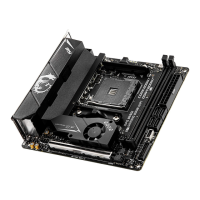
Do you have a question about the MSI MPG B550I GAMING EDGE WIFI and is the answer not in the manual?
| Chipset | AMD B550 |
|---|---|
| Form Factor | Mini-ITX |
| Socket | AM4 |
| Memory Slots | 2 |
| Max Memory | 64GB |
| PCIe Slots | 1 x PCIe 4.0 x16 |
| Wireless | Wi-Fi 6 (802.11ax) |
| Bluetooth | Bluetooth 5.1 |
| RGB Support | Mystic Light RGB |
| Memory Speed | Up to 5100 MHz (OC) |
| Storage Interface | 4 x SATA 6Gb/s |
| USB Ports | 1 x USB 3.2 Gen 2 Type-C, 2 x USB 2.0 |
| LAN | 2.5G LAN |
| Audio | Realtek ALC1200 |
| Video Outputs | HDMI 2.1, DisplayPort 1.4 |
Lists all necessary tools and components for computer assembly.
Instructions to prevent damage from electrostatic discharge during handling.
Advice on handling, storing, and environmental conditions for the motherboard.
Diagrams illustrating the step-by-step process of installing the CPU.
Visual guide on how to correctly install DDR4 memory modules.
Detailed pin configuration for connecting front panel switches and LEDs.
Visual guide for mounting the motherboard inside the computer case.
Illustration and guide for connecting ATX and CPU power supply cables.
Diagrams showing how to connect SATA hard disk drives and DVD drives.
Visual steps for securely installing a graphics card into the PCIe slot.
Diagram showing connections for keyboard, mouse, display, and audio devices.
Visual guide on connecting power and turning on the computer.
Specifications for the CPU socket, chipset, and memory support.
List of all items included in the motherboard package.
A visual representation of how motherboard components are connected.
Detailed labels and descriptions of all ports on the rear I/O panel.
Status tables for LAN LEDs and configuration for audio ports.
Guide to using the Realtek Audio Console for sound settings and features.
Instructions for attaching and orienting the Wi-Fi antennas.
Labeled diagrams of the motherboard's front and bottom views.
Details on the AM4 CPU socket and proper CPU placement.
Instructions and recommendations for installing DDR4 memory modules.
Information on using the PCIe slot, especially for graphics cards.
Best practices for connecting SATA cables to devices and motherboard.
Step-by-step guide for installing an M.2 SSD in the M.2_1 slot.
Instructions for installing an M.2 SSD in the M.2_2 slot.
Pin configuration for front panel switches and LEDs.
Pinout and connection details for the front panel audio jack.
Pin definitions for the 24-pin ATX and 8-pin CPU power connectors.
Pin configuration for connecting USB 2.0 devices via the front panel header.
Guide for connecting a USB 3.2 Gen 1 Type-C port from the front panel.
Pin configuration for connecting USB 3.2 Gen 1 ports from the front panel.
Explains PWM/DC modes and fan control settings in BIOS.
Pinout details for CPU, Pump, and System fan connectors.
How to connect and configure the chassis intrusion detection feature.
Steps to reset the chassis intrusion warning in BIOS.
Procedure for clearing CMOS settings using the JBAT1 jumper.
Explains the meaning of the EZ Debug LEDs for troubleshooting.
Guide for connecting addressable RGB LED strips.
Guide for connecting addressable RGB LED fans.
Steps for installing the Windows 10 OS on the new system.
Procedure for installing essential drivers from the MSI driver disc.
Steps for installing additional system utilities provided by MSI.
Overview of benefits and capabilities of UEFI BIOS.
Lists situations where UEFI might not be compatible and provides warnings.
How to identify whether the system is in UEFI or CSM boot mode.
Instructions on how to access the BIOS setup during boot.
Explains the function of each key within the BIOS interface.
Methods to reset BIOS settings to factory defaults.
Step-by-step guide to update BIOS using the M-FLASH utility.
How to update BIOS using the MSI Dragon Center software.
Procedure for updating BIOS using the dedicated Flash BIOS button.
Introduction to the basic system information and settings in EZ Mode.
Details on viewing system information like CPU, memory, and BIOS version.
How to access detailed information about connected components.
Explanation of how to use function buttons like M-Flash and Hardware Monitor.
Steps to add frequently used BIOS settings to a favorites list.
Steps to remove BIOS items from the favorites list.
Overview of the main menus available in Advanced BIOS Mode.
How to configure system date, time, and view status.
Displaying information about connected SATA and M.2 devices.
Accessing detailed system and motherboard information.
Overview of settings related to PCIe, ACPI, and peripherals.
Settings for integrated graphics if the CPU supports it.
Configuring USB controllers and power management features.
Settings related to Windows OS configuration and system security.
Options for saving changes or exiting the BIOS setup.
Configuring OC modes and CPU ratio for overclocking.
Adjusting advanced CPU parameters and FCH base clock.
Enabling A-XMP profiles for memory overclocking.
Setting DRAM frequency and other memory timing parameters.
Detailed settings for memory timing and stability.
Configuring CPU voltages and power protection features.
Adjusting voltage settings for DDR memory modules.
Viewing CPU specifications and detailed memory information.
Detailed steps for updating the BIOS using the M-FLASH utility.
Options for saving, loading, and clearing overclocking profiles.
How to load OC profiles from ROM/USB or save them to USB.
Using Smart Fan to automatically adjust fan speeds based on temperature.
Explains buttons for setting fan speeds like Full Speed or Defaults.
Guide on how to manually adjust fan speed curves using the interface.
Steps to enable the RAIDXpert2 utility in BIOS settings.
Steps for initializing disks before creating an AMD RAID array.
Detailed procedure for creating RAID arrays using RAIDXpert2.
Steps for safely deleting RAID arrays and associated data.
Installing RAID drivers during operating system setup.
Installing the RAIDXpert2 management software after OS installation.
Solutions for power-related issues and no display signal.
Troubleshooting steps for common audio, network, and USB problems.
Information regarding FCC and C-Tick certifications.
Guidelines for battery handling, disposal, and safety.
Restrictions on wireless radio use, especially indoor operation.
Information on EMF compliance and radio frequency exposure.
How to get help from MSI support or local distributors.
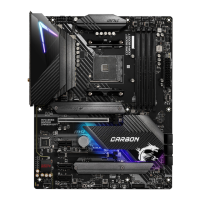
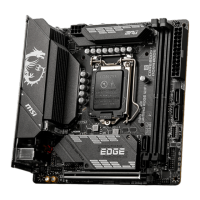
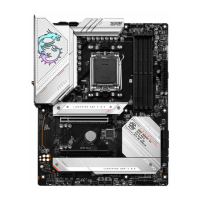
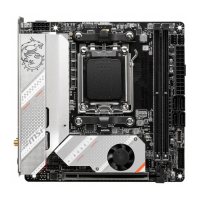
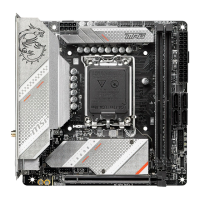
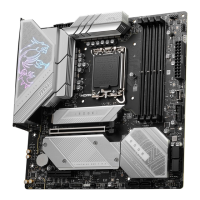
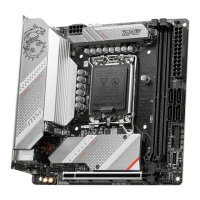
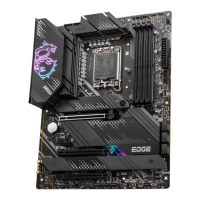
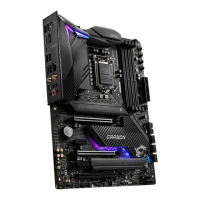
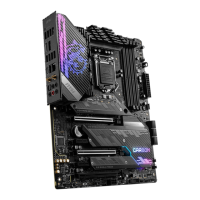
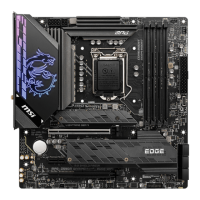
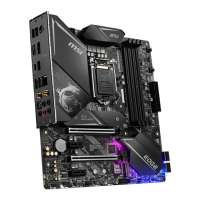
